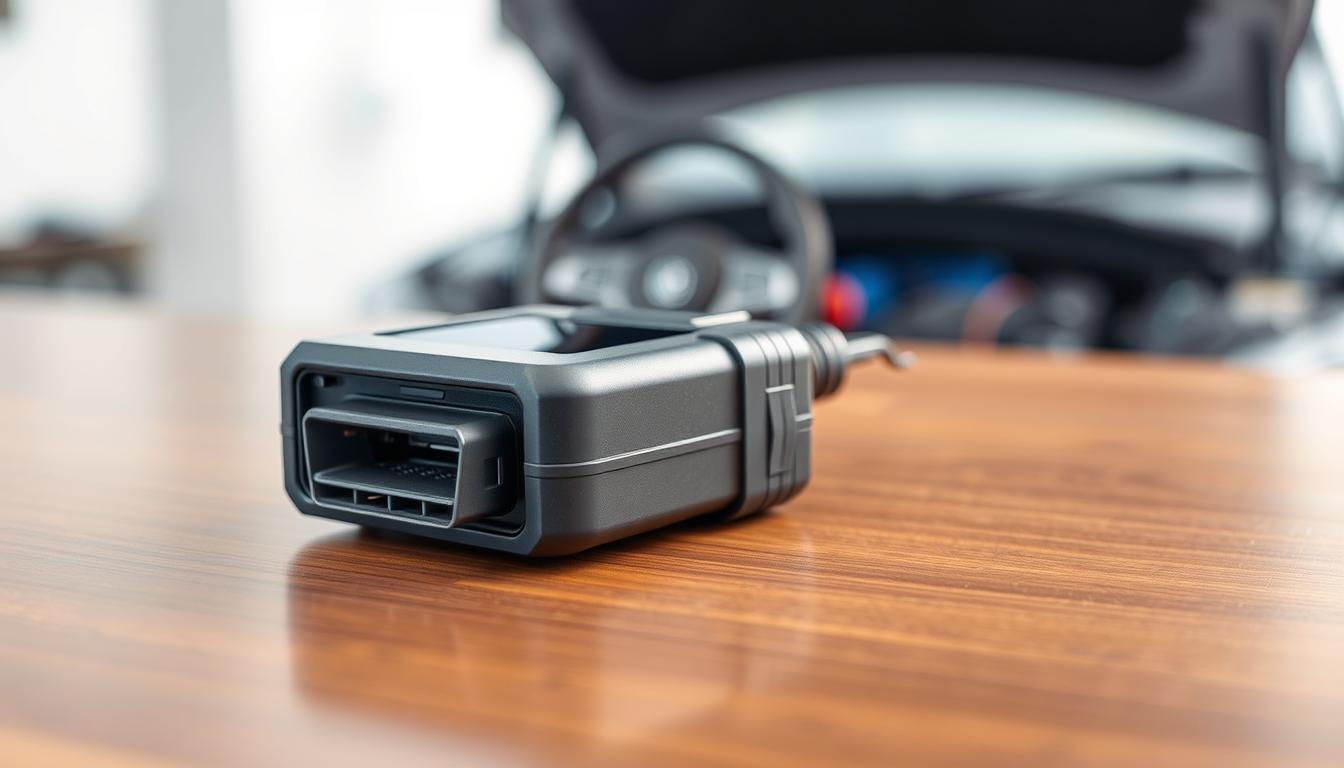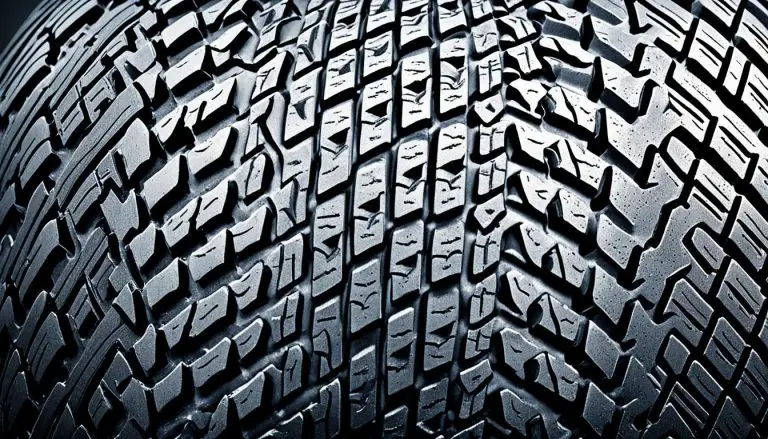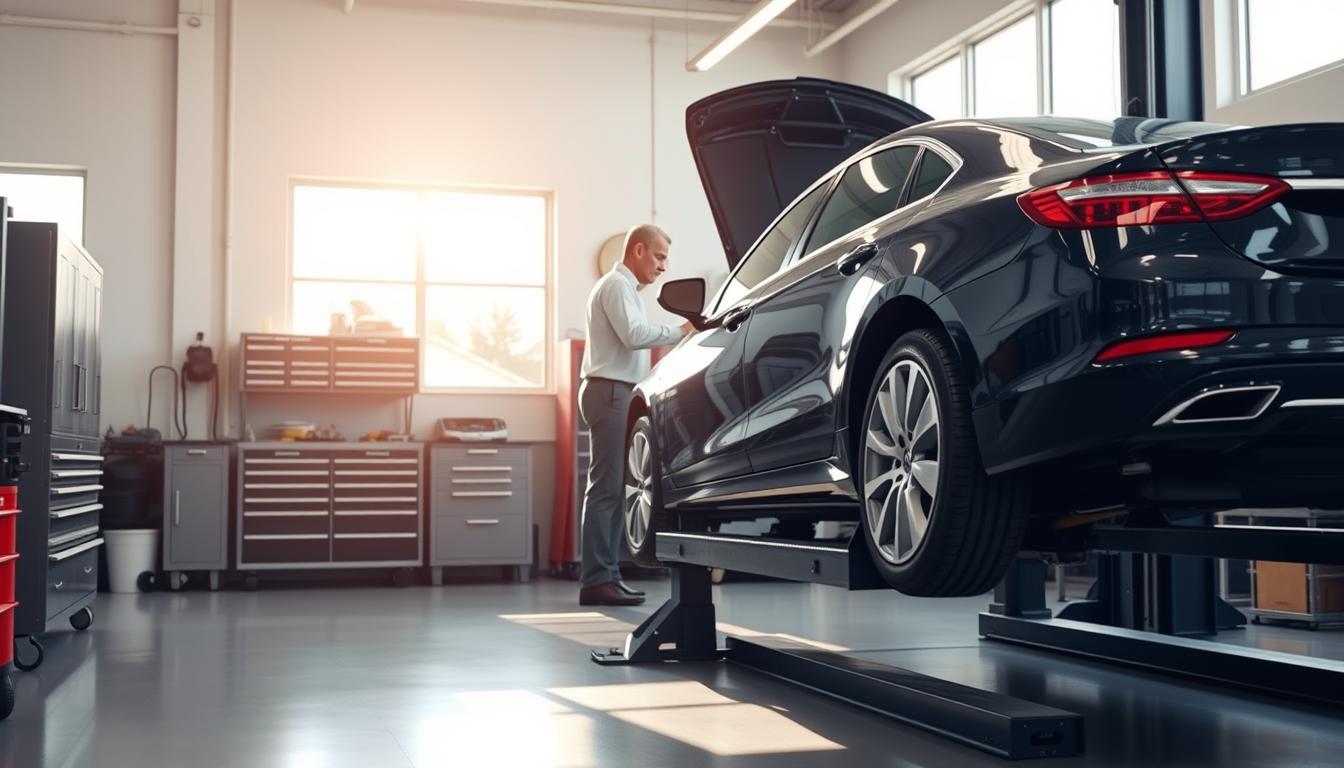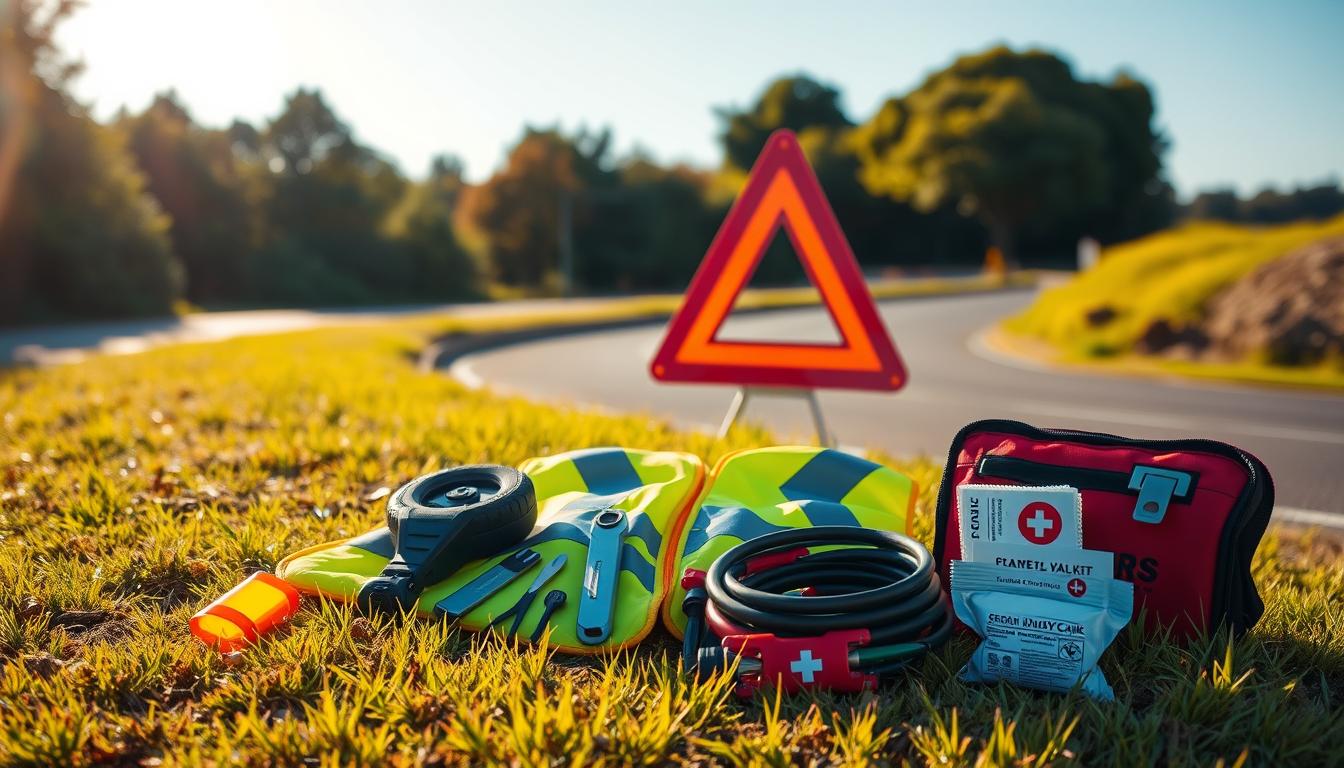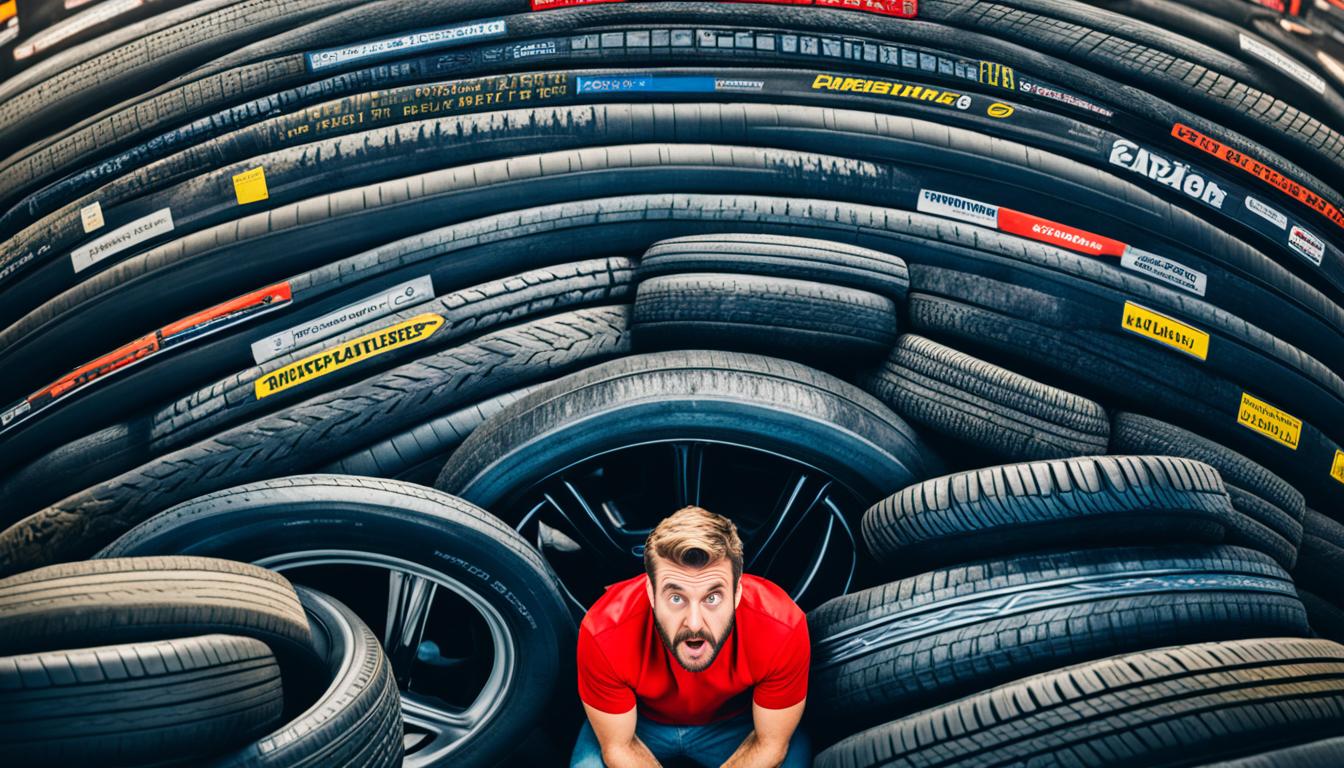
Did you know 80% of drivers make a key error when buying new tires? Many choose used or “gently worn” tires to save money. Yet, if not careful, these buyers might risk their family’s safety.
Good tires from smart driving and check-ups are crucial. When tires wear out, they need replacing. New tires are costly, so some buy used ones. These can be much cheaper, up to 80% off. But, without the right knowledge, this choice can be dangerous.
Understanding Tire Sizing and Specifications
Picking the right tires needs good knowledge of their sizing and specs. This includes the width, aspect ratio, diameter, and type. Each of these plays a big part in how your tires perform, keep you safe, and fit your vehicle. Below, we’ll look at key points about choosing tire specifications, tire brands, and tire sizes.
Tire Width and Aspect Ratio
The tire’s section width is its broadest part, usually at the center of the sidewall. This is measured in millimeters. The aspect ratio, shown as a percentage, tells you the sidewall height compared to the width. It can tell you a lot about how the tire will feel when driving and its performance.
Rim Diameter and Construction Type
The rim diameter comes in inches and tells you the wheel size the tire fits. This is important for compatibility. The construction type, whether it’s radial (R) or bias-ply, affects how the tire wears, its rolling, and the ride quality.
Load Index and Speed Rating
Load index and speed rating are crucial. They show how much weight the tire can take and how fast it can go. These ratings keep you safe by making sure your tires are up to the job.
Knowing about tire specifications can help you choose the best tire brands and tire sizes for your car. It ensures your vehicle runs well, is safe, and lasts a long time.
The Importance of Tread Depth
The tire tread is very important for a tire’s safety and performance. Tires with low tire tread might not grip the road well. This can make you slide or take longer to stop, especially in bad weather. Sadly, many drivers – up to 80% – don’t check their tire tread> regularly.
The law says tires must have at least 2/32 of an inch of tire tread. However, new tires have much deeper treads, around 11/32 of an inch. It’s a good idea to think about changing your tires when they get down to about 3/32 to 4/32 of an inch deep. For a tire to be considered very safe, its tire tread should be between 11/32 and 6/32 of an inch deep. To check how worn your tires are, try the penny test. Stick a penny in the tread with Lincoln’s head upside down. If you can see all of his head, consider getting new tires. Keeping your tires in good shape by regularly checking tire tread depth helps keep you safe on the road.
| Tire Tread Depth | Condition |
|---|---|
| 11/32 – 6/32 inch | Considered safe on the road |
| 3/32 – 4/32 inch | Mechanics recommend replacement |
| 2/32 inch | Minimum legal limit |
Checking for Tire Age and Sidewall Damage
Buying used tires means you should pay attention to their age and how the sidewall looks. Rubber in tires wears out over time. It can become dry, cracked, and brittle, despite looking like it has enough tread.
So, always check the sidewall for tire damage.
Identifying Manufacturing Date Codes
To know how old a tire is, look for the manufacturing date code. This code is usually an oval stamp on the sidewall with a letter and four numbers. It tells you the week and year the tire was made.
Tires over five years old might not be safe anymore.
Signs of Dry Rot and Cracking
When checking tires, also look for dry rot, cracks, or other damage on the sidewall. These issues show the tire has worn out and may not be safe, even if it looks okay from the top.
If you see these signs, it’s best not to buy the tire. It could cause safety and handling problems.
Buying Tires: New vs Used
When choosing
tires
, drivers must decide: new or
used tires
? Although
used tires
can save money, they also bring risks.
Advantages of Purchasing New Tires
New tires promise full tread depth, a clear age, and no past harm. You also get the support of the maker’s warranty and payment plans. For those who care about safety and quality, this is key.
Risks of Buying Used Tires
But, used tires might hide low tread, have an unknown age, and unseen sidewall damage. Buying new tires is safer unless you’re tire-savvy. It’s a better choice for your safety and your car’s performance.
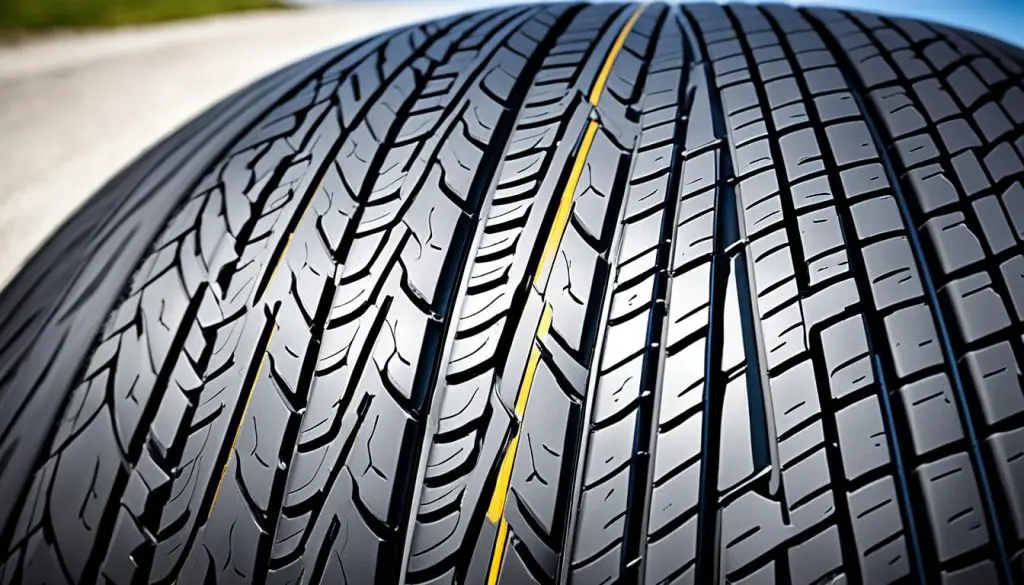
Avoiding Tire Kickers
In the car sales world, tire kickers are a big issue. These are people who seem interested but really aren’t. They waste time and energy that could be spent on real buyers. By spotting them early, sales teams can focus on those more likely to buy. This makes them more effective in their work.
Identifying Genuine Buyers
Real buyers know what they want and how much they can spend. They have looked into the different tire shopping choices. They are ready to decide. On the other hand, tire kickers talk a lot, are unclear about what they need, and focus more on getting a good deal than on the product’s real value.
Time-Wasting Behaviors of Tire Kickers
Salespeople need to know the signs of a tire kicker. These could be lots of questions, test driving the car, or trying to negotiate. But, they won’t buy. Not wasting time on these folks allows sales teams to chase after real opportunities. This can help them sell more cars in the end.

Buying Car Tires on a Budget
Buying new tires on a tight budget can be tough. But, with careful research, there are good budget tires. These options keep you safe and perform well. You can find new tires through sales, rebates, and deals.
Many tire shops offer special deals. They also have tire financing or payment plans. These help make the cost of new tires more manageable over time.
Finding Discounts and Promotions
Knowing about tire sales can save you a lot of money. Both national stores and local shops like Discount Tire and Costco have great deals. Costco, for example, recently had a $150 off sale on tire sets.
Financing Options for Tire Purchases
If you can’t pay for new tires all at once, don’t worry. Many shops offer financing. This lets you pay off the tires bit by bit. This way, you can get the tires you need without a huge upfront payment.
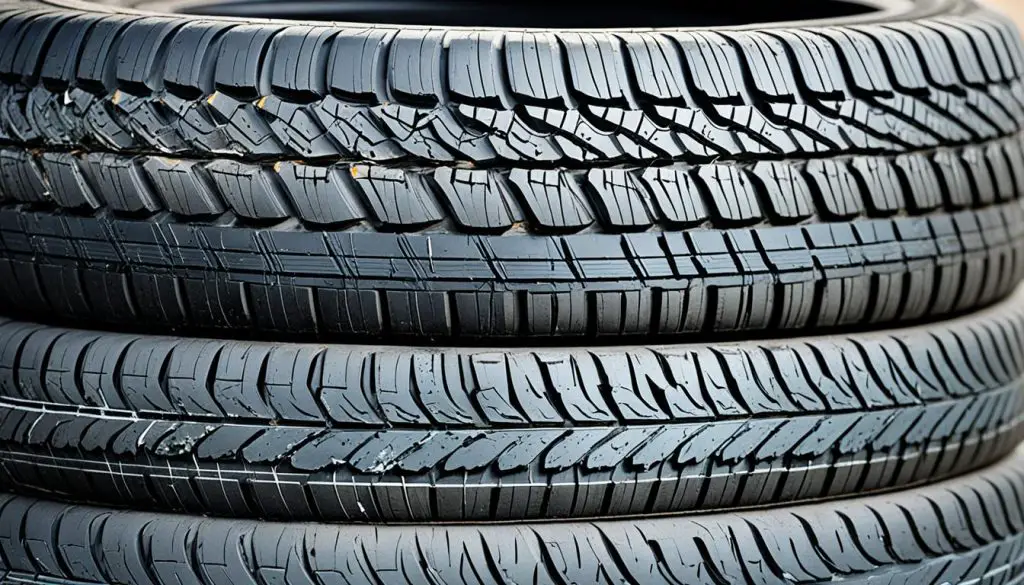
Drivers can get the right tires within their budget. It’s about using all the available options. This includes deals, promotions, and financing. These choices help keep your car safe without emptying your wallet.
Maintaining and Extending Tire Life
After buying new or high-quality used tires, taking care of them is key. Good tire maintenance extends their life and keeps you safe. It’s important to keep the right tire inflation by checking your car’s placard or manual. This helps with grip, saves gas, and makes your tires last longer.
Importance of Proper Inflation
Getting the tire inflation right is critical. Too little air makes tread wear uneven and gas mileage drop. Too much air can make handling and braking harder. Watch and keep the air at the level your carmaker recommends. This will help your tires last and your car perform better.
Regular Wheel Alignment and Rotation
It’s not just about air; aligning and rotating your tires regularly matters too. A good alignment makes sure tires wear evenly. And rotating them spreads wear out, using them more evenly. Doing these checks keeps your tires in shape, saving you from buying new ones too soon.
Conclusion
Choosing the right car tires is key to how your vehicle runs, keeping you safe, and managing costs. Knowing about tire sizes and signs of wear helps. It’s also wise to dodge common buyer mistakes. These steps lead to wise choices for lasting quality and value, whether it’s new or used.
Looking out for tire safety and staying on top of details matters. Use deals and financing to fit tires into your budget. Keep tires in good shape with regular care like checking inflation and wheel alignment. This care extends their life and improves your drive.
Getting the best tires is vital for your car and everyone’s safety. This article’s advice guides car owners through buying the right tires confidently. It ensures they make choices that work best for getting around safely.
FAQ
What are the key factors to consider when purchasing car tires?
When getting new tires, think about size, depth, age, and sidewall. Also, decide between new or used tires.
How do I determine the right tire size for my vehicle?
To pick the right size, look at width, ratio, and diameter. Your car’s manual or the door jamb has this info.
What is the importance of tread depth, and how can I check it?
Tread depth is key for grip and safety. Use the penny test. If you see the top of Lincoln’s head, the tread is too low.
How can I determine the age and condition of used tires?
Find the manufacture date on the sidewall. Avoid tires older than five without damages like dry rot.
What are the advantages and risks of buying new vs. used tires?
New tires have full tread and warranties. Used tires might have safety issues. Always go for new if you’re not sure.
How can I identify and avoid “tire kickers” when shopping for tires?
Tire kickers waste time and show no buying interest. They often haggle on price. Genuine buyers are focused and ready to buy after researching.
How can I find affordable car tires within my budget?
To save money, look out for discounts and payment plans. Doing your homework helps you find good tires that don’t break the bank.
What maintenance is required to extend the lifespan of my tires?
Keep the right pressure, rotate, and align tires. This can make them last longer and save you money.

